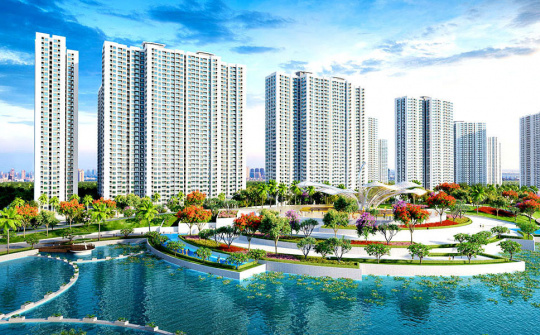VNHNO - Vietnam has made progress in promoting socio-economic development in key economic regions (KERs) across the country, however, a coordination mechanism is needed to further promote KERs’ rapid and sustainable growth, thus contributing to improving the effectiveness of Vietnam’s economic restructuring.
The conclusion was reached by economists at an international workshop on promoting the coordination mechanism for the development of KERs in Vietnam which was held in Hanoi on September 24 by the Central Institute for Economic Management (CIEM) in collaboration with the "Australia Supports Economic Reform in Vietnam" (Aus4Reform) programme.

Experts at the event suggest that links between key economic areas in Vietnam should be promoted to boost their economic development. Photo: NDO/Trung Hung
The event is held under the framework of Aus4Reform, sponsored by the Australian Department of Foreign Affairs and Trade, which assists the Government of Vietnam in achieving its objectives of improving the business investment climate towards high labour productivity and increased quality and competitiveness of the economy aimed at fast and sustainable development. The programme is worth US$6.5 million and will be deployed from 2017-2021.
Limited connectivity among economic zones
Presenting the research report on the coordination mechanism for the development of KERs in Vietnam carried out by CIEM, Tran Trung Hieu, Deputy Head of Economic Institutions Department (under the CIEM) said that the formation of key economic areas is an astute policy, aiming to create breakthroughs and provide the driving force for socio-economic development for the whole country.
In recent years, the KERs have always achieved higher growth rates than the national average, at 8.61% for the 2011-2015 period. The income of people in these areas is also higher than those in other economic regions. Meanwhile, the contribution to the nation’s total export turnover of KERs also accounts for a high proportion, reaching 80.6% in 2015. However, economic growth has been uneven in the four KERs across nation.
In addition to the imbalanced level of development and economic capacity among the regions, one of the major causes for this mismatch, as indicated by experts at the seminar, was a lack of regional connectivity. Hieu emphasised that the division into 63 provinces and cities throughout the country made it difficult for regions to coordinate, resulting in fragmented and inefficient economic activities.
Tran Trung Hieu, Deputy Head of CIEM’s Economic Institutions Department, said that the current division of key economic regions in Vietnam causes difficulties for the coordination mechanism between economic regions. Photo: NDO/Trung Hung
Moreover, the mechanism of intraregional coordination between localities in KERs is not really optimal. Citing the results of a study in 2012, Hieu said that localities in the Mekong Delta region tend to associate with large provinces and cities like Ho Chi Minh City, while not holding much interest in coordinating with other localities in the region. The economic structure of these localities is often similar and does not promote comparative advantages, leading to the fact that localities often compete with one another.
According to experts, the maintenance of a closed production chain in many localities makes the competition between units in the region more powerful and thus they limited each other. This results in great difficulties for connectivity among them, leading to a failure in developing a regional linkage strategy.
Solve the issue of coordination
In order to create a new mechanism that promotes linkages and synergies in socio-economic development among economic regions, experts recommend moving from the "closed" approach, that is gathering localities close together to form economic zones, to a more “open” approach to create a regional economic space that is not only based on administrative boundaries, but also promoting regional connections, both within the region and among provinces and cities in different areas on a regional basis of comparative benefits.
According to CIEM's Deputy Head, Phan Duc Hieu, there needs to be a broader connection, even forming "triangle" or "quadrangle" development, to create areas with related interests to build general plans of action together.
Le Anh Vu, former Deputy Head of the Institute of Regional Sustainable Development, under the Vietnam Academy of Social Sciences, speaks at the event. Photo: NDO/Trung Hung
To make connections become sustainable, Le Anh Vu, former Deputy Head of the Institute of Regional Sustainable Development, under the Vietnam Academy of Social Sciences, said it is necessary to ensure the interests of the entities in the region. This problem can be solved by a policy mechanism that facilitates the interests of stakeholders so that linkages are voluntary based on common interests.
In particular, it is necessary to issue a breakthrough policy, for example, a law or a decree, on the development of KERs in order to institutionalise and address their institutional bottlenecks. In addition, there should be a binding mechanism for linkages, allowing local authorities to benefit from the State budget when implementing regional linkages, along with a mechanism for reward/monitoring of the implementation of joint commitments on coordination.
In addition, as linkage information is an important factor, it is necessary to build a database system of key economic zones for the planning and monitoring of the implementation of regional cooperation./.







